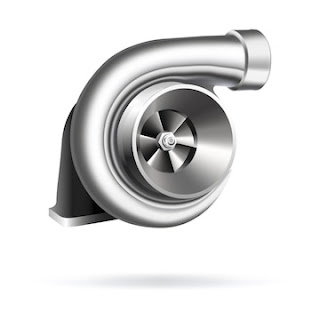What is Turbocharger? Turbo Lag, WasteGate Valve
Getting a turbocharged vehicle is exciting but before you start the first thing that comes into your mind. In this article, I have shared the topics like What is Turbocharger, Turbo Lag, WasteGate Valve, and many other short questions and doubts related to the turbocharger.What is Turbocharger? How Does it Work?
A turbocharger is a forced induction device which added to the engine to increase the volumetric efficiency of an engine. It is powered by the flow of exhaust gases coming out of the engine. It does not require any additional power or battery to run.
It compresses the intake air and forces more air into the intake manifold. Compressed air is cooled down with the help of an intercooler before sending it to the engine intake. Which helps to produce more power. A turbocharger helps to reduce emissions at high RPM. It is also known as a high-altitude compensation kit.
Turbocharger Construction
The design of the turbocharger is very impressive when seen from a technological view. Here are the main components of a turbocharger.
- Turbine
- Compressor
- Center Housing Hub
- Rotating assembly
- These are parts equipped inside a turbocharger. The main block of the turbocharger has some holes, to pass the lubricating oil. It helps in lubrication and reduces friction. Have a look at the referred image for clear observation.
Is Turbocharger used in diesel or petrol engines?
At first, a turbocharger was introduced for diesel engines only. But, now it is available for petrol engines also.
👉 Check Alternative fuels used in automobiles except for petrol and diesel.
What is Turbo Lag?
Turbo lag refers to the delay between the engine operation and the turbo operation. When the acceleration padel is pressed, the exhaust gas moves the turbine and then the compressor starts rotating with the help of the turbine and starts sending fresh air in. So, the time between the pressing padel and the inducing fresh air is called turbo lag.
How to reduce turbo lag?
Here are the various ways by which turbo lag can be reduced.
- Turbo lag can be reduced by:
- Using lighter materials in the turbocharger.
- Reducing bearing frictional loss.
- Using VGT or VNT actuator.
- Using an electric or hybrid turbocharger.
Different Types of Turbocharger
- Single turbocharger
- Twin turbocharger
- Twin scroll turbocharger
- Variable geometric turbo
- Variable twin-scroll turbo
- Electric Turbocharger
👉Do you love zero pollution? Check the all-new Mahindra eSUV400.
👉How fuel is delivered using CRDI System?
Wastegate valve in a turbocharger
It is a valve that controls the exhaust gas in a turbocharger. Generally, it bypasses some amount of exhaust gas to reduce the exhaust gas pressure during high RPM. It will further decrease the intake air boost pressure and prevent the engine from detonation.
Turbocharger Increases the power or pickup
Power and pickup are two different things. Increasing the engine power or the pickup can't be done by only adding a turbo. You need to look at many factors first. Generally, a turbocharger increases the volumetric efficiency, speed, and performance of the engine. Also lowers the pollution level.



Thanks
ReplyDelete